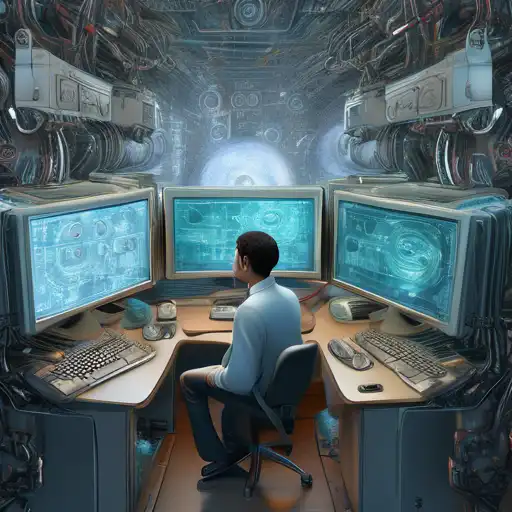Introduction to Computer Vision
Computer vision is a field of artificial intelligence (AI) that enables machines to interpret and understand the visual world. By leveraging digital images from cameras and videos and deep learning models, machines can accurately identify and classify objects—and then react to what they "see."
The Science Behind Computer Vision
At its core, computer vision involves the automatic extraction, analysis, and understanding of useful information from a single image or a sequence of images. It seeks to automate tasks that the human visual system can do. This involves methods for acquiring, processing, analyzing, and understanding digital images, and extraction of high-dimensional data from the real world to produce numerical or symbolic information.
Key Technologies Powering Computer Vision
- Deep Learning: A subset of machine learning where convolutional neural networks (CNNs) are used to improve the accuracy of computer vision applications.
- Image Processing: Techniques to perform operations on images to get an enhanced image or to extract some useful information from it.
- Pattern Recognition: The technology that identifies patterns and regularities in data, which is crucial for object detection and classification.
- 3D Reconstruction: The process of capturing the shape and appearance of real objects, which is essential for applications like augmented reality.
Applications of Computer Vision
Computer vision has a wide range of applications across various industries. Here are some of the most impactful ones:
- Healthcare: From detecting tumors in radiology images to assisting in surgeries, computer vision is revolutionizing healthcare.
- Automotive: Self-driving cars use computer vision to understand their surroundings and make driving decisions.
- Retail: Automated checkout systems and inventory management are made possible through computer vision.
- Security: Facial recognition technologies enhance security systems in public spaces and online platforms.
Challenges and Future Directions
Despite its advancements, computer vision faces challenges such as high computational costs, the need for large datasets, and issues with privacy and ethics. However, with the continuous improvement in AI and machine learning algorithms, the future of computer vision looks promising. Innovations like real-time processing and improved accuracy are on the horizon, making computer vision an exciting field to watch.
Conclusion
Computer vision is transforming how machines interact with the visual world, offering endless possibilities across industries. As technology advances, we can expect even more innovative applications that will further blur the lines between human and machine capabilities. For those interested in diving deeper into this fascinating field, exploring AI and machine learning resources is a great next step.
